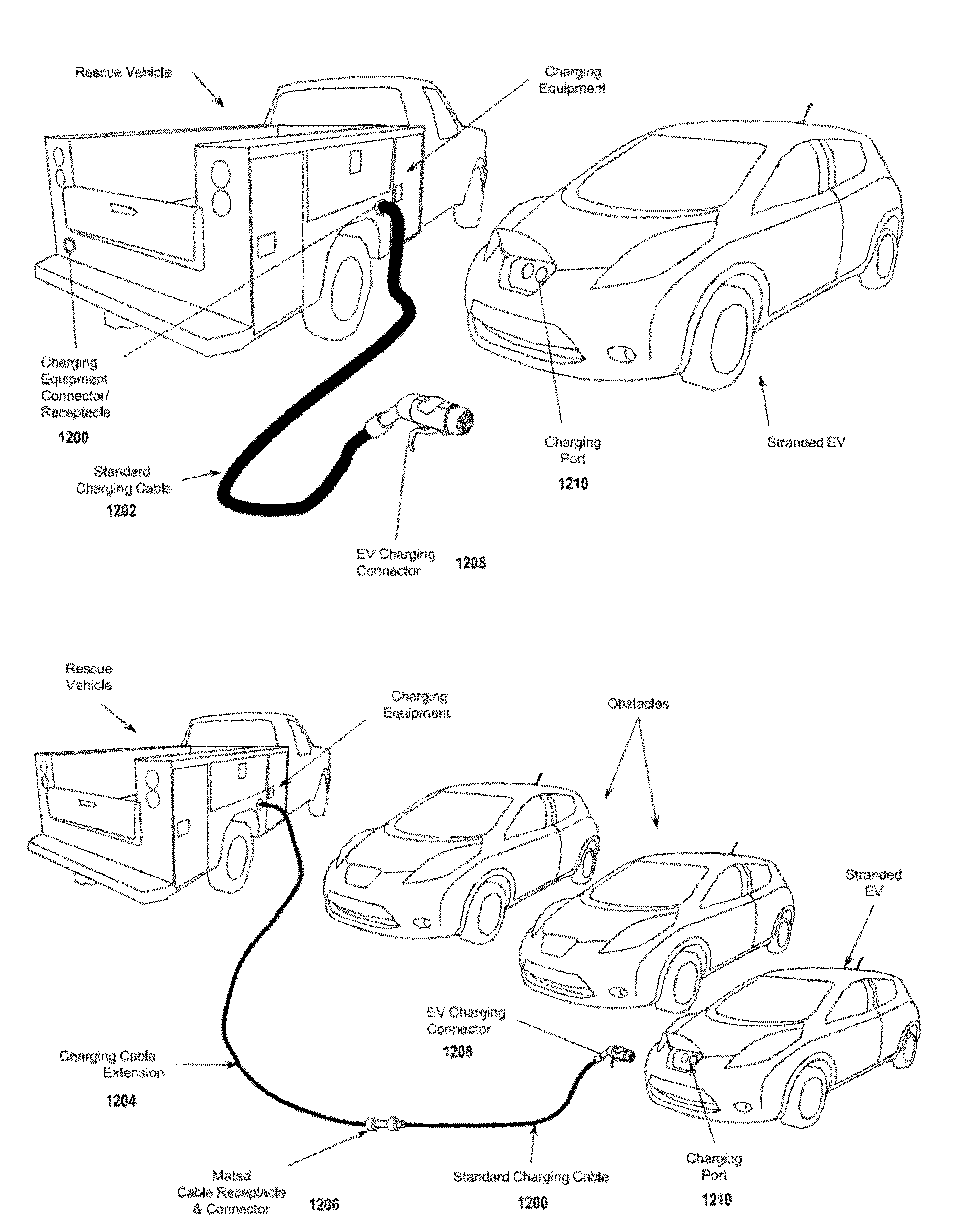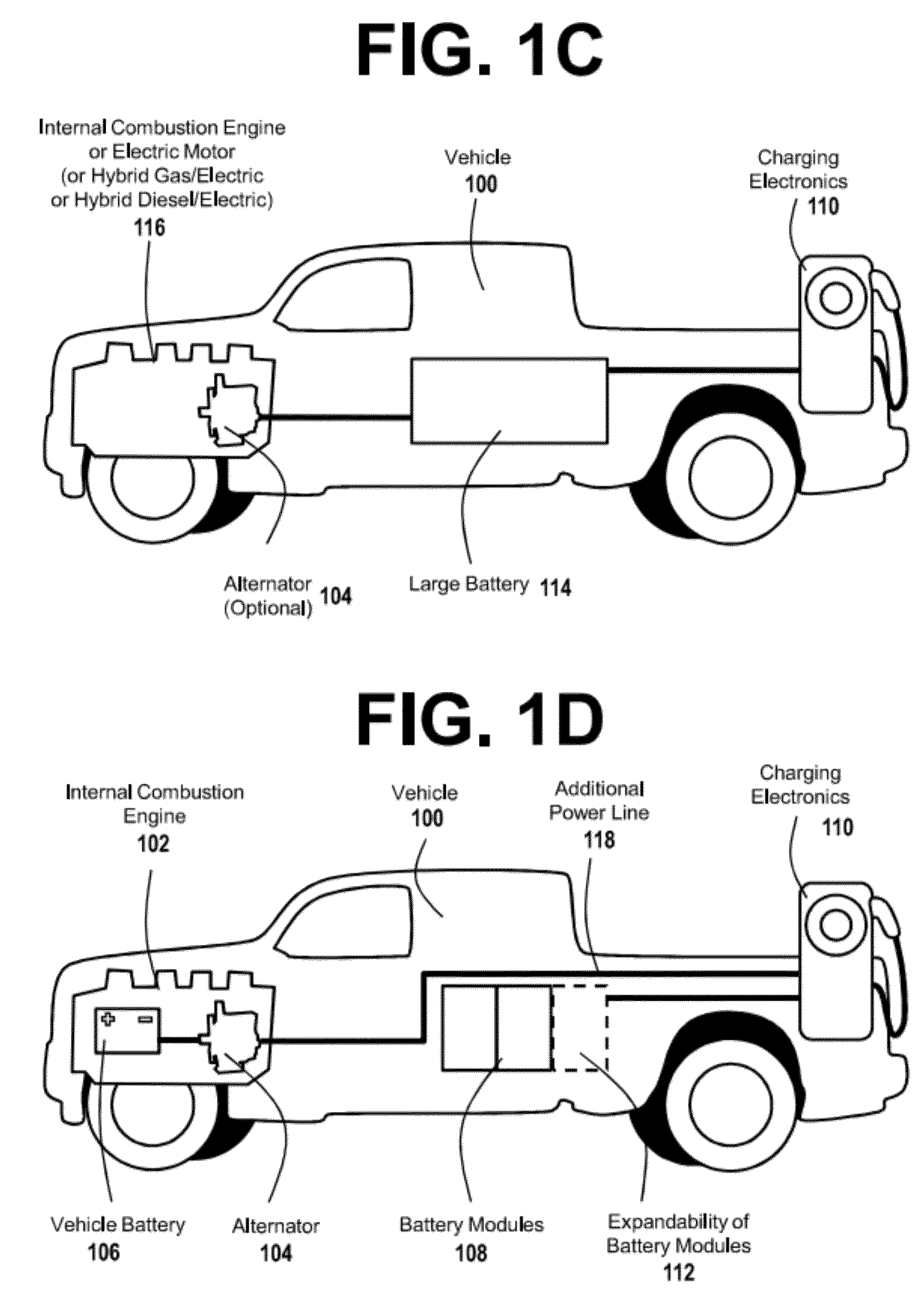Charging service vehicles and methods using modular batteries
a technology for charging service vehicles and batteries, applied in the direction of battery/fuel cell control arrangement, power to power outlet, etc., can solve the problems of large electric vehicles that require a relatively large charge of energy, danger to operators that arises from high-powered battery connectors, and inefficiency losses, so as to reduce the number of rescue vehicles and achieve maximum turnover of successful assignments , the effect of reducing the number of operations each rescue vehicle can achiev
- Summary
- Abstract
- Description
- Claims
- Application Information
AI Technical Summary
Benefits of technology
Problems solved by technology
Method used
Image
Examples
Embodiment Construction
[0068]Vehicle-Mounted EV Charging System
[0069]Some embodiments of the invention may be referred to as an Adaptable Multifunction Emergency EV Charging System (“AMEECS”). The AMEECS is designed to carry enough energy in a chemical battery pile and, potentially, in onboard gasoline, diesel or other fuel, to recharge an EV. Preferably, the EV is charged with sufficient kilowatt-hours permit the EV to get out of a roadway and / or get to a suitable charging station.
[0070]FIGS. 1A, 1B, 1C, and 1D show various examples of a vehicle-mounted EV charging system according to embodiments of the present invention. The system of FIG. 1A is a vehicle 100 that is used to assist stranded EVs that has an internal combustion engine 102. The vehicle 100 may run on gasoline, diesel, or another standard fuel. The vehicle engine 102 has an alternator 104 used to provide electricity to the vehicle systems and to recharge the vehicle battery 106, which may be a standard 12-volt type. In some embodiments, the...
PUM
 Login to View More
Login to View More Abstract
Description
Claims
Application Information
 Login to View More
Login to View More - R&D
- Intellectual Property
- Life Sciences
- Materials
- Tech Scout
- Unparalleled Data Quality
- Higher Quality Content
- 60% Fewer Hallucinations
Browse by: Latest US Patents, China's latest patents, Technical Efficacy Thesaurus, Application Domain, Technology Topic, Popular Technical Reports.
© 2025 PatSnap. All rights reserved.Legal|Privacy policy|Modern Slavery Act Transparency Statement|Sitemap|About US| Contact US: help@patsnap.com



